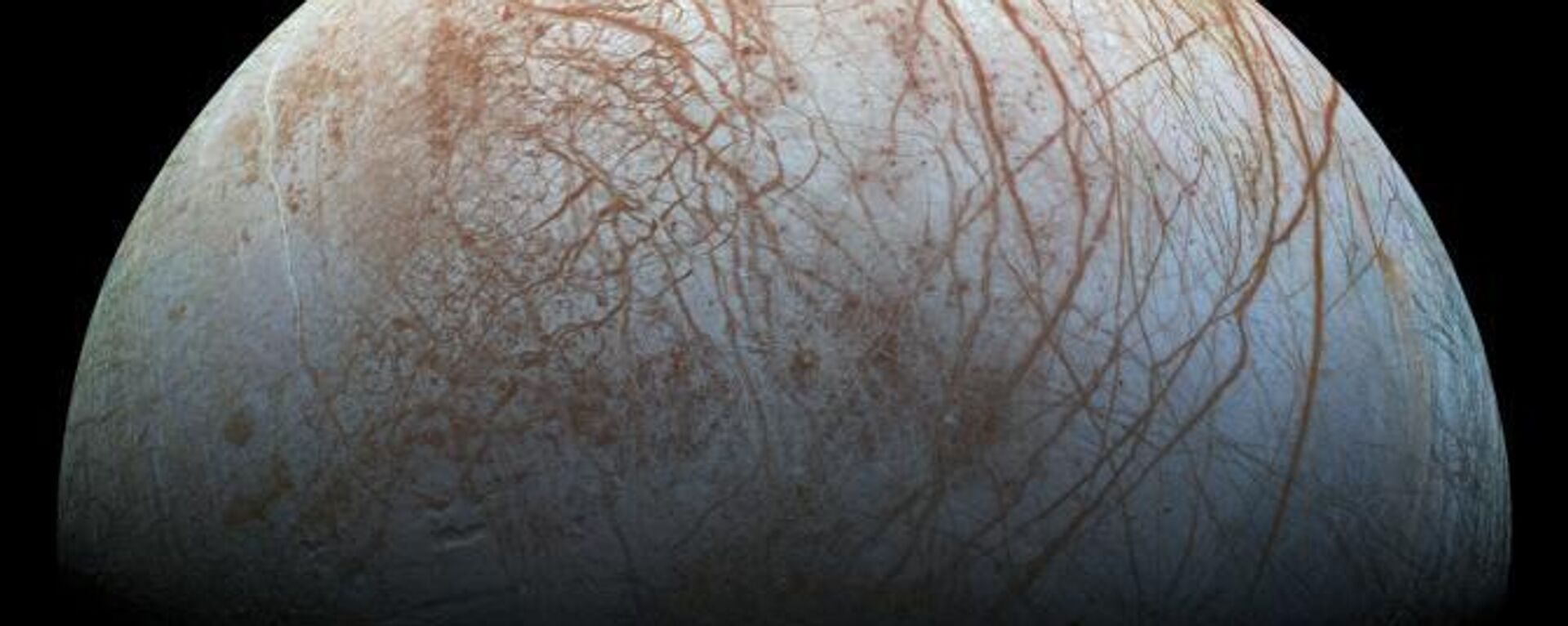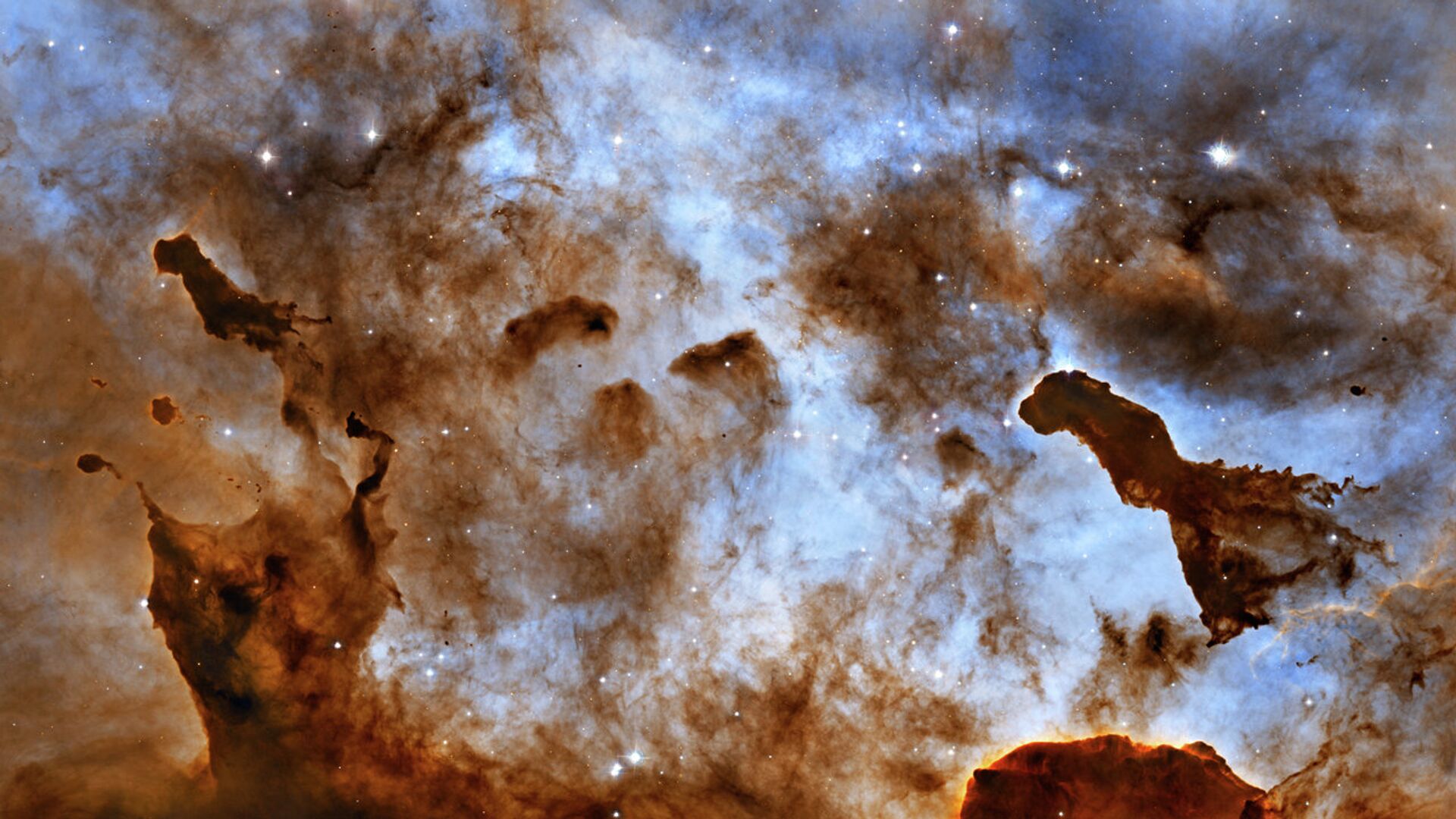https://sputnikglobe.com/20230927/scientists-create-sugar-interstellar-ices-on-earth-1113732992.html
Scientists Create ‘Sugar’ Interstellar Ices on Earth
Scientists Create ‘Sugar’ Interstellar Ices on Earth
Sputnik International
Scientists at the S.P. Korolev Samara National Research University, as part of an international scientific collaboration, have discovered the reasons for the formation of a significant amount of sugar molecules in the early stages of star formation. These molecules are the primary source of energy in living organisms.
2023-09-27T15:06+0000
2023-09-27T15:06+0000
2023-09-27T15:06+0000
russia
science & tech
society
earth
russia
samara
molecules
space
origin
https://cdn1.img.sputnikglobe.com/img/102134/53/1021345334_0:18:1281:738_1920x0_80_0_0_1a79a8cef3447eb3e2738d41d2c31c94.jpg
The research team successfully reproduced cosmic "interstellar ice" in a scientific laboratory. The data obtained indicates a high probability of the "cosmic" origin of complex organic molecules, which serve as the basic building blocks of life on Earth. The results of their research have been published in The Journal of Physical Chemistry Letters.According to scientists, sugar molecules are an integral part of all life on Earth. They play a crucial role in the synthesis of RNA and DNA, which form the backbone of genomes, and serve as a vital source of energy in living organisms. These molecules consist of carbon atoms attached to hydroxyl groups and hydrogen atoms, with the chain ending in an aldehyde group - an oxygen and hydrogen atom attached to the last carbon atom in the chain.The origin of these structurally complex molecules and their significance to terrestrial life has been complex scientific questions, prompting numerous hypotheses. Scientists have detected simple sugar molecules (containing just three carbon atoms) on the surface of certain meteorites falling to Earth, as well as observing their presence in interstellar ices.Since the temperature in the densest regions of molecular clouds in interstellar space is about 5-10 Kelvin (between -268°C and -263°C), matter there is predominantly in the form of solid particles covered by icy envelopes, known as cosmic ices. Within these ices, complex organic molecules, including prebiotic ones, form under the influence of intense galactic radiation.These "cosmic" substances include relatively simple molecules such as methyl alcohol or methanol (CH3OH) and acetaldehyde (CH3CHO). These are combinations of the most common molecules found in our galaxy.The simplest form of sugar, the semi-acetal (R/S)-1-methoxyethanol, can be synthesized from methanol and acetaldehyde. Scientists from Samara University, in cooperation with their American colleagues, have demonstrated that such a process actually takes place even at extremely low cosmic temperatures.The process of sugar formation has been both theoretically modeled and experimentally replicated.According to him, these semi-acetals could serve as precursors to interstellar sugars and related molecules under the influence of ionizing radiation.Samara University is a member of the "Priority 2030" program of the Ministry of Education and Science of the Russian Federation for the support of universities.
https://sputnikglobe.com/20230922/scientists-find-carbon-on-jupiters-moon-europa-raising-questions-about-habitability-1113595323.html
https://sputnikglobe.com/20210315/scientists-figure-out-how-interstellar-factories-of-complex-organic-molecules-are-formed-1082346586.html
earth
russia
samara
Sputnik International
feedback@sputniknews.com
+74956456601
MIA „Rosiya Segodnya“
2023
Sputnik International
feedback@sputniknews.com
+74956456601
MIA „Rosiya Segodnya“
News
en_EN
Sputnik International
feedback@sputniknews.com
+74956456601
MIA „Rosiya Segodnya“
Sputnik International
feedback@sputniknews.com
+74956456601
MIA „Rosiya Segodnya“
russia, samara university, samara university space science, space ice, interstellar ice, cosmic origin
russia, samara university, samara university space science, space ice, interstellar ice, cosmic origin
Scientists Create ‘Sugar’ Interstellar Ices on Earth
Scientists at the S.P. Korolev Samara National Research University, as part of an international scientific collaboration, have discovered the reasons for the formation of a significant amount of sugar molecules in the early stages of star formation. These molecules are the primary source of energy in living organisms.
The research team successfully reproduced cosmic "interstellar ice" in a scientific laboratory. The data obtained indicates a high probability of the "cosmic" origin of complex organic molecules, which serve as the basic building blocks of life on Earth. The results of their research have been published in
The Journal of Physical Chemistry Letters.
According to scientists, sugar molecules are an integral part of all life on Earth. They play a crucial role in the synthesis of RNA and DNA, which form the backbone of genomes, and serve as a vital source of energy in living organisms. These molecules consist of carbon atoms attached to hydroxyl groups and hydrogen atoms, with the chain ending in an aldehyde group - an oxygen and hydrogen atom attached to the last carbon atom in the chain.

22 September 2023, 22:58 GMT
The origin of these structurally complex molecules and their significance to
terrestrial life has been complex scientific questions, prompting numerous hypotheses. Scientists have detected simple sugar molecules (containing just three carbon atoms) on the surface of
certain meteorites falling to Earth, as well as observing their presence in interstellar ices.
Since the temperature in the densest regions of molecular clouds in interstellar space is about 5-10 Kelvin (between -268°C and -263°C), matter there is predominantly in the form of solid particles covered by icy envelopes, known as cosmic ices. Within these ices, complex organic molecules, including prebiotic ones, form under the influence of intense galactic radiation.
These "cosmic"
substances include relatively simple molecules such as methyl alcohol or methanol (CH3OH) and acetaldehyde (CH3CHO). These are combinations of the most common molecules found in
our galaxy.
The simplest form of sugar, the semi-acetal (R/S)-1-methoxyethanol, can be synthesized from methanol and acetaldehyde. Scientists from Samara University, in cooperation with their American colleagues, have demonstrated that such a process actually takes place even at extremely low cosmic temperatures.
The process of sugar formation has been both theoretically modeled and experimentally replicated.
"To conduct the experiment, we used an apparatus that maintains ultra-high vacuum conditions and recreated ice at temperatures of several Kelvins, bombarded by high-energy particles. Then we observed the chemical transformations that took place," said Anatoly Nikolayev, a postgraduate student at Samara University.
According to him, these semi-acetals could serve as precursors to interstellar sugars and related molecules under the influence of ionizing radiation.
"Complex molecules form in cryogenic ices during star formation and are later incorporated into planetoids, asteroids, and comets. Detailed analysis of meteorites has shown that biologically important molecules, such as ribose, could survive the harsh conditions of space. Therefore, some of these complex molecules may have been delivered to early Earth, serving as an exogenous source of biomolecules and possibly providing an additional pathway for the formation of biologically important molecules during the earliest stages of our planet's life," he clarified.
Samara University is a member of the "Priority 2030" program of the Ministry of Education and Science of the Russian Federation for the support of universities.






